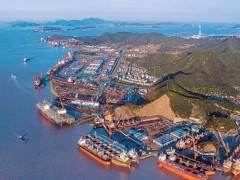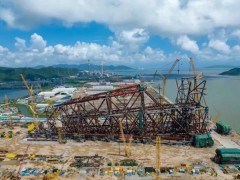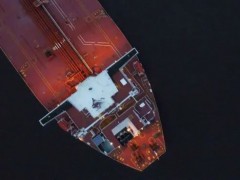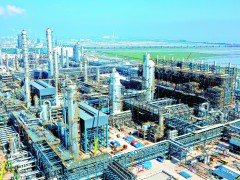据钻井地带网站2023年6月12日报道,据全球权威评级机构最近发表的一份报告称,由于企业执行净零排放目标计划,碳捕获与封存(CCS)和二氧化碳去除(CDR)技术将“在未来脱碳方面发挥关键作用”。
该公司在其可持续发展研究团队撰写的一份报告中表示,在25家收入最高的石油和天然气公司的样本中,所有公司都计划使用CCS、CDR或碳信用中的至少一种来实现其脱碳目标。
碳捕获与封存
CCS是一组将二氧化碳从其他气体中分离出来,然后将其捕获并储存在永久设施中的技术,正如报告中所定义的那样, 这种技术可用于发电和工业,直接从生产过程中捕获二氧化碳,并通过管道将二氧化碳输送到长期的地质储存地点。捕获和储存的碳也可以用于能源部门,例如在枯竭的储油层中开采石油和天然气。另一个用途是通过捕获蒸汽甲烷重整和水气转换反应产生的二氧化碳来生产蓝色氢气。
报告称,基于CCS的解决方案被认为比基于自然的解决方案(NbS)“具有更强的永久性特征”,因为只要“管理得当”,它们就不太容易受到二氧化碳意外释放的影响。然而,报告称,与重新造林等解决方案相比,CCS在技术准备方面普遍落后。报告称,储存也是决定脱碳的一个主要因素,因为CCS有足够的储存能力来处理“几十年的排放”。
报告称,在样本公司中,去年的CCS产能占其范围1和范围2排放量的7%,其中大部分活动来自美国和欧洲的石油和天然气巨头。CCS和碳捕获、利用和封存(CCUS)的部署计划将使产能从目前的5000万吨增加到2030年的3.25亿吨,其中包括提高石油采收率的目标和捕获其他公司排放的解决方案。
在样本公司中,只有60%的公司透露了他们的预期未来产能,只有56%的公司确定了所需的具体投资成本,而24%的公司表示他们将利用捕获的二氧化碳来提高石油采收率,但报告称,“这些目标往往以模糊的方式表达”。
根据世界经济论坛所言,范围1排放是公司通过运营其拥有或控制的产品而产生的直接排放,而范围2排放是由公司购买的能源生产产生的间接排放。
二氧化碳去除
如报告中所定义的那样,CDR是一组基于自然和技术的解决方案,可以从大气中去除二氧化碳,并将其永久储存在陆地、地质或海洋中。CDR的例子包括在造林和再造林过程中植树,以及改善土壤质量。报告指出,CDR技术通常不会直接减少排放。
在报告样本中,92%的石油和天然气公司计划主要通过基于自然的解决方案来使用CDR,但“很大一部分公司的披露缺乏细节”。报告中的公司专注于植树造林和再造林的解决方案。
报告称,技术上的CDR解决方案,如直接空气碳捕获和储存(从环境空气中去除和储存碳),尚处于较早的发展阶段,“技术和经济挑战仍有待克服”。
广泛的估计范围
报告中所有脱碳解决方案的生命周期成本估计范围很广,显示了“技术准备状况、具体应用和所涉及的不确定性”。此外,报告说,CCS和CDR可能会产生其他环境后果,比如增加生态系统的用水需求。
报告称:“概括而言,大型石油和天然气公司正在探索不同的碳捕获商业模式,其中可能包括隔离其他企业活动产生的排放,而不一定是捕获自己的排放。”此外,标准普尔全球评级公司表示,对大公司来说,CCS投资是“谨慎且负担得起的”,但“不具有变革性”。
李峻 编译自 钻井地带网站
原文如下:
Carbon Capture, CO2 Removal to Play Key Decarbonization Role
Carbon capture and storage (CCS) and carbon dioxide removal (CDR) will “play a key role in decarbonization” as companies execute plans on their net-zero emission targets, according to a recent report by the top Rating Agency.
In a sample of 25 of the highest-revenue oil and gas companies, all of them plan to use at least one among the options of CCS, CDR, or carbon credits to meet their decarbonization goals, the rating firm said in a report authored by its Sustainability Research team.
Carbon Capture and Storage
CCS is a group of technologies that separate carbon dioxide from other gases, then capture and store it in a permanent facility, as defined in the report. The technology can be deployed in power generation and industry to capture carbon dioxide directly from processes and transport the gas in pipelines to long-term geological storage sites. The captured and stored carbon can also be used in the energy sector, such as for extracting oil and gas in depleted reservoirs. Another use would be the production of blue hydrogen by capturing the carbon dioxide formed by steam methane reforming and a water-gas shift reaction, it said.
The report said that CCS-based solutions are seen as “having stronger permanence characteristics” than nature-based solutions (NbS) as they are considered less vulnerable to the accidental release of carbon dioxide, provided they are “well managed.” However, CCS is generally behind in technological readiness compared to solutions such as reforestation, the report said. Storage is a major factor in decarbonization decisions as well, as there is enough storage capacity for CCS to handle “decades of emissions”, the report said.
Of the companies in the sample, CCS capacity in 2022 represented seven percent of their scopes 1 and 2 emissions, with most activity coming from oil and gas majors in the USA and Europe, the report said. Plans for the deployment of CCS and carbon capture, utilization, and storage (CCUS) would see capacity rise from 50 million tons currently to 325 million tons by 2030, which include targets for enhanced oil recovery and solutions to capture emissions from other companies. Of the firms in the sample, only 60 percent revealed their expected future capacity and only 56 percent identified the specific investment costs required, while 24 percent said they would use the captured carbon for enhanced oil recovery, but “often these aims are expressed in vague terms”, the report said.
According to the World Economic Forum, scope 1 emissions are direct emissions that a company causes by operating the things that it owns or controls, while scope 2 emissions are indirect emissions created by the production of the energy that an organization buys.
Carbon Dioxide Removal
CDR is a group of both nature-based and technological solutions that remove carbon dioxide from the atmosphere and permanently store it in terrestrial, geological, or ocean reservoirs, as defined in the report. Examples of CDR include planting trees in the process of afforestation and reforestation, as well as improving soil quality. CDR technologies often do not directly reduce emissions, the report noted.
In the report sample, 92 percent of the oil and gas firms plan to use CDR mainly through nature-based solutions, but a “high proportion of companies’ disclosure lacks details”. The companies in the report focused on afforestation and reforestation solutions.
Technological CDR solutions such as direct air carbon capture and storage, which removes and stores carbon from ambient air, are at much earlier stages of development, with “technical and economic challenges still to be overcome”, the report said.
Wide Range of Estimates
The life-cycle costs of all the decarbonization solutions in the report have a wide range of estimates, showing the “state of technological readiness, the specific application, and the uncertainty involved”. In addition, CCS and CDR could have other environmental consequences such as increasing water demand in ecosystems, the report said.
“In general, large oil and gas companies are exploring different business models for carbon capture, which may include sequestering emissions from other companies’ activities, not necessarily capturing their own emissions”, the report said. Further, the rating agency said that CCS investments are “prudent and affordable” for large companies but “not transformational”.
免责声明:本网转载自其它媒体的文章及图片,目的在于弘扬石化精神,传递更多石化信息,宣传国家石化产业政策,展示国家石化产业形象,参与国际石化产业舆论竞争,提高国际石化产业话语权,并不代表本网赞同其观点和对其真实性负责,在此我们谨向原作者和原媒体致以崇高敬意。如果您认为本站文章及图片侵犯了您的版权,请与我们联系,我们将第一时间删除。







